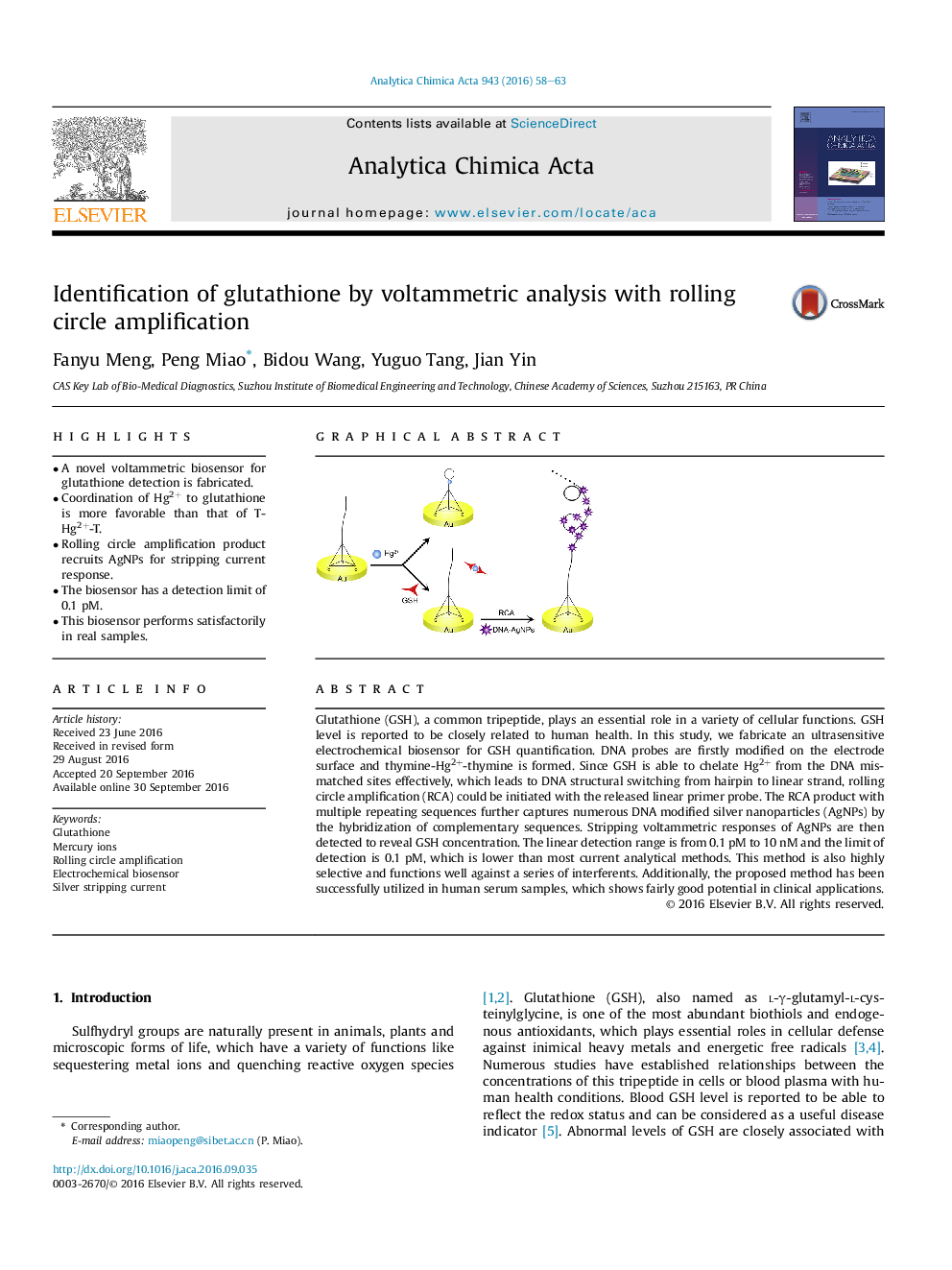| Article ID | Journal | Published Year | Pages | File Type |
|---|---|---|---|---|
| 5131221 | Analytica Chimica Acta | 2016 | 6 Pages |
â¢A novel voltammetric biosensor for glutathione detection is fabricated.â¢Coordination of Hg2+ to glutathione is more favorable than that of T-Hg2+-T.â¢Rolling circle amplification product recruits AgNPs for stripping current response.â¢The biosensor has a detection limit of 0.1 pM.â¢This biosensor performs satisfactorily in real samples.
Glutathione (GSH), a common tripeptide, plays an essential role in a variety of cellular functions. GSH level is reported to be closely related to human health. In this study, we fabricate an ultrasensitive electrochemical biosensor for GSH quantification. DNA probes are firstly modified on the electrode surface and thymine-Hg2+-thymine is formed. Since GSH is able to chelate Hg2+ from the DNA mismatched sites effectively, which leads to DNA structural switching from hairpin to linear strand, rolling circle amplification (RCA) could be initiated with the released linear primer probe. The RCA product with multiple repeating sequences further captures numerous DNA modified silver nanoparticles (AgNPs) by the hybridization of complementary sequences. Stripping voltammetric responses of AgNPs are then detected to reveal GSH concentration. The linear detection range is from 0.1 pM to 10Â nM and the limit of detection is 0.1 pM, which is lower than most current analytical methods. This method is also highly selective and functions well against a series of interferents. Additionally, the proposed method has been successfully utilized in human serum samples, which shows fairly good potential in clinical applications.
Graphical abstractDownload high-res image (134KB)Download full-size image
